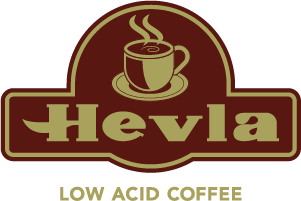
Majority of the population likes to drink coffee, that’s for sure. They like the energizing effect it gives them every morning that keeps them on their feet throughout the day. Others even drink another cup or more during the day, to keep the buzz up. But while a lot of people enjoy coffee, there are those unfortunate once who are not able to enjoy it because of the discomfort it gives their stomach after ingesting even just one cup. The acids in coffee can be too strong for some which sadly becomes a hindrance to their enjoyment of coffee and prevent them from gaining the healthful benefits to be derived from it.
Recently, though, there has been a growing variant of coffee that is supposed to address this problem. Low-acid coffees made by specialty brands have been popping up in the market to provide the much needed relief for people who are sensitive to the high acid content of coffee.
Basics of acidity
Acidity is typically measured by an element’s pH level. The base neutral pH level is 7.0 which is the pH level of water; that means it is neither acidic nor alkaline. The lower the pH level, the more acidic the food is and the higher the pH level, the food is considered to be more alkaline. The scale of pH levels is logarithmic, so that a 6.0 pH level is 10 times more acidic than a 7.0 pH level, while a 5.0 pH level is 100 times more acidic than 6.0 pH.
Cola beverages have a pH level of 2.0, while lemonade and orange juice come in at a pH level of 3.0, which means these drinks are highly acidic.
Acidity of coffee
The acidity of coffee could vary depending on the type of bean or the location where it was grown, the roasting process and the brewing method.
Coffee beans that are grown in highlands are generally considered to be more acidic, while those grown in lower elevation areas are less acidic.
Coffee that is grown on volcanic soil like those in Hawaii and Indonesia are also more acidic. The manner of picking the beans and the treatment of these before roasting also affect the acidity of coffee. Coffee cherries tend to lose some acid as they mature so a cherry that is picked before full maturity will be more acidic than those picked when they are at their most ripe and red stage.
The treatment of coffee beans after they are picked also affects the acidity level. The dry method in which the beans are dried in the sun yields a less acidic coffee compared to the wet method wherein the beans are fermented before drying.
There are also other special treatments that are specifically designed to strip the coffee of its acids such as high-pressure steaming and slow or interrupted roasting.
As coffee beans are roasted, they lose some of their acidity. Therefore, the darker the roast, the less acidic the coffee is. However, the trade off here is that it gains a more bitter taste as the beans are toasted and burnt.
There are certain brewing methods that could lower the acidity level of coffee. The most popular method is the cold brew wherein the coffee is soaked in cold water to remove some of its acid content.
The typical acidity of a normal-roast coffee can fall within the range of 4.5 to 4.9 pH level.
For many coffee lovers and those who consider themselves as coffee connoisseurs, the acidity of coffee is probably the most important aspect, comparable to the bouquet of wine, that allows them to distinguish the quality of the coffee and to discern the various notes in flavor that reveal the true characteristics of the coffee.
Choosing a low-acid coffee
As mentioned, the typical normal-roast coffee has a pH level of 4.5 to 4.9. But at these levels, some people can be sensitive to the acids so that they experience acid reflux, heartburns and stomach upsets after drinking coffee.
To provide a solution to this problem, some coffee companies like Hevla have decided to come up with a low-acid coffee that will allow coffee lovers to enjoy their favorite brew without sacrificing their comfort and health.
There are two options in choosing coffee that is low-acid. There are those that are naturally low in acid because they are grown in the high elevation areas and those that have been roasted dark, and there are low acid coffee that have been specially treated to remove their acids.
Coffee that has been grown in low-lying areas should be less acidic. Some of these may include those from the flatlands Brazil or the monsoon lowlands of Sumatra. Other areas that produce coffee with light acidity would be at the Ivory Coast of Africa and in India.
Roasting is the process of bringing out the flavor and aroma of coffee, and along with these, some of the acids of coffee are also extracted during the roasting process. Like previously said, dark roast coffee are less acidic than light or medium roast. Dark roasted coffee beans, aside from their almost black color, are usually shiny with oil, so you can definitely identify them by just looking. If they have been pre-packaged, watch out for the names Espresso, Italian, French and Continental on the packaging as these are the dark-roast variety of coffee.
Finally, there are coffees that have undergone a special process that is specifically designed to take away its acidity to some extent. Presently, there are not too many low-acid coffee brands in the market, however they seem to be growing to a significant number. These types of coffee are usually prepared and sold by specialty shops and brands that cater specifically to the low-acid coffee offering. Low-acid coffee contains all the goodness of coffee and its many health benefits, without the burnt flavor of overly roasted coffee.
How low-acid coffee is made
There are three known techniques used to achieve low-acid coffee prior to brewing.
The first one is by way of high-pressure steam that strips the coffee beans of its waxy coating that contains the acid. This is called the Darbovan Improvement Procedure which was developed in Europe more than three decades ago. The steaming procedure followed by vacuuming is done prior to roasting. It is an all-natural process that does not include the use of chemicals. This is how Hevla Coffee makes its coffee low-acid. This process allows Hevla to remove about 70 irritants from coffee that cause stomach upsets without affecting the taste of coffee.
Another method that is also all-natural is by roasting the beans slowly at lower temperatures to remove the acidity but prevent the beans from burning.
Other companies, on the other hand, remove the acids from coffee by using chemical and acids. These result in a slightly medicinal aftertaste in the coffee.
Benefits of low-acid coffee
Coffee has been discovered to have many properties that are highly beneficial to the human body. Its richness in antioxidants are proclaimed to be able to ward off several major illnesses like cancer, heart disease, Parkinson’s disease, cirrhosis of the liver, Alzheimer’s disease and diabetes. It also has other benefits like promoting weight loss, improving cognitive functions and physical performance during fitness workouts and body building trainings.
Despite all these benefits, though, some people who are sensitive to coffee’s high acid content suffer from its side effects of heartburn, stomach upset and acid reflux. It is especially painful for people who have been diagnosed with gastroesophageal reflux disease, or more commonly known as GERD because their already sensitive tissues cannot tolerate the acidic conditions that would be otherwise normal for other people.
The good news is that low-acid coffee is able to eliminate these acid-related problems while still maintaining the delicious flavors of coffee and delivering all of its healthful benefits. So if you’re one with a sensitive stomach, go ahead and indulge in your most favorite beverage – the low-acid version, that is.


Comments
Leone:
Hello,
Your description of the process you use interests me. I want low acid and cannot seem to find it here in the USA. I might try you sometime. Leone
Aug 11, 2018
Krista :
Can you give me an estimate of how much caffeine is in the dark roast? Thanks.
Aug 11, 2018
Linda:
Do you have a low acid coffee that is also shade grown and/or fair trade and/or organic?
Aug 11, 2018
Lynn:
Hi, Think you’re on the right track with a low acid coffee. I have been using low acid coffee for some time now.
Interested in your figures, but you did not tell us what the acidity level of your coffee is.
Is it 3.5, or 4.5 or 5…. comparing the figures you share to other brands on the market like Dunkin Donuts etc., is interesting but not helpful in knowing the actual acid level. I am surprised that your healthful low acid brand is only .33 points lower than Dunkin Donuts.
Although not surprised theirs is so low, since DD coffee is very bitter and in fact I can’t drink it it tastes so awful, but then I do drink it black.
Aug 11, 2018
Tina Cox:
Where can i find the lowest acid coffee. Where can i find your brand? Do you have white bean? What flavors of low acid?
Aug 11, 2018
Leave a comment